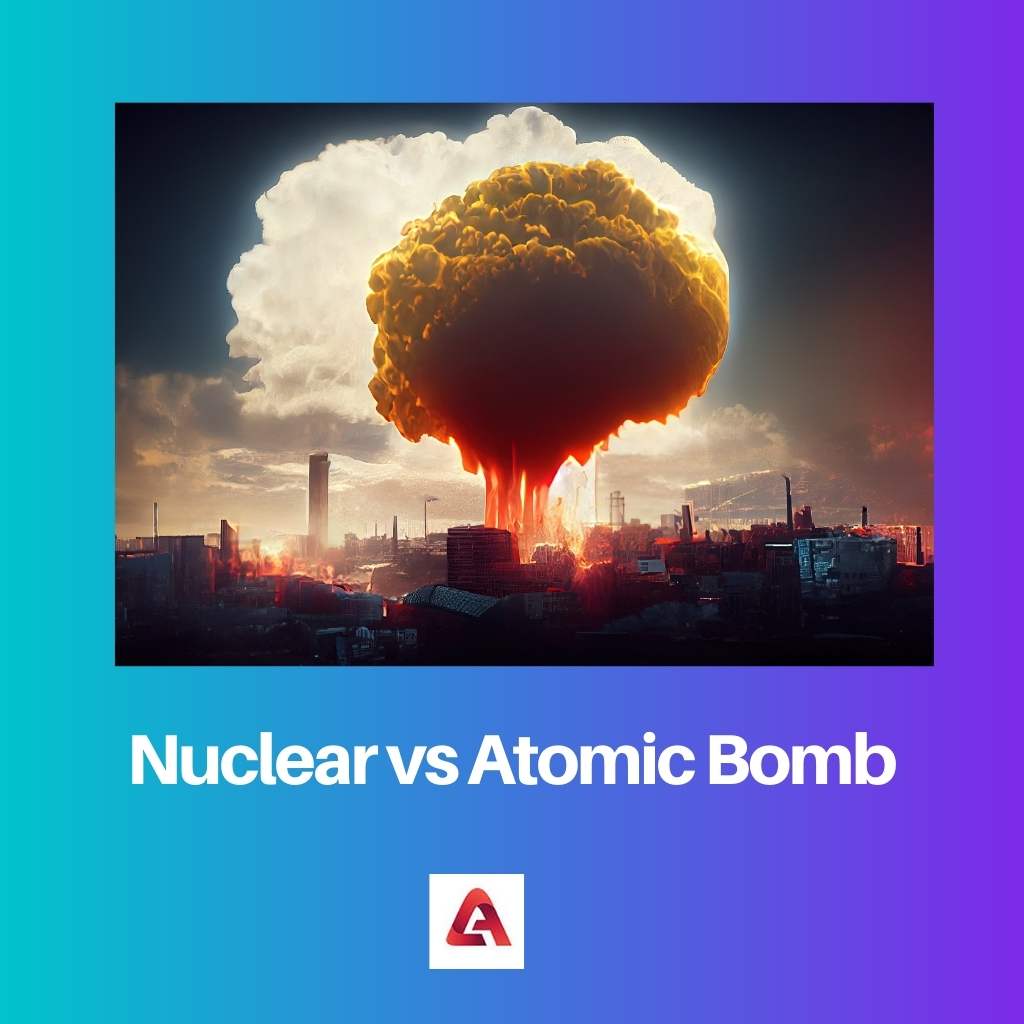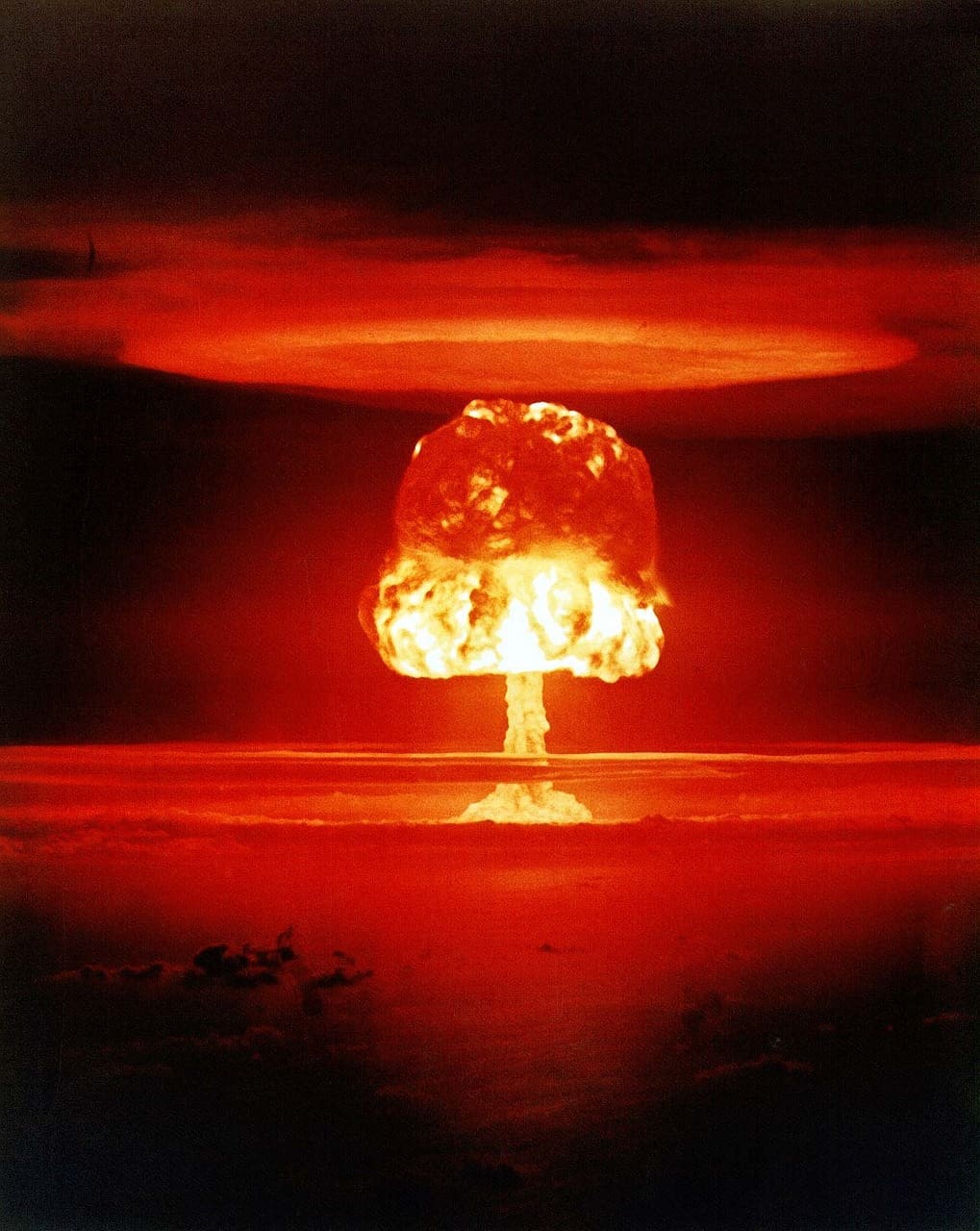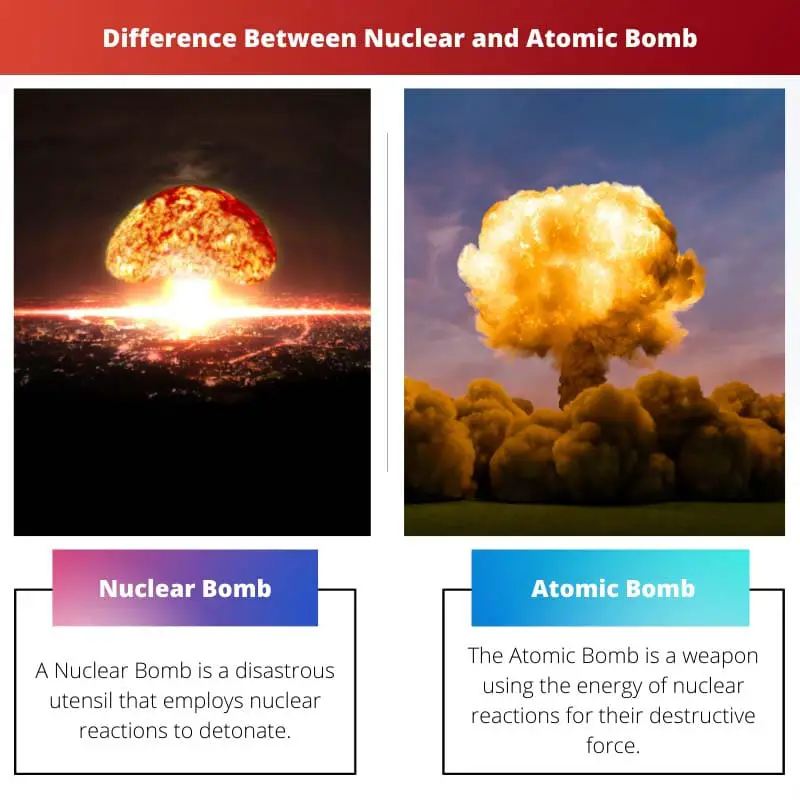A Nuclear Bomb is well-known and bewildered as an Atomic Bomb because of its exceptional similarities in origin and name. However, they are extraordinarily different from each other.
A Nuclear Bomb is a weapon that derives its destructive force from nuclear reactions, either fission or a combination of fission and fusion. The Atomic Bomb functions by splitting atoms into smaller atoms.
Key Takeaways
- Atomic bombs rely on nuclear fission reactions, whereas nuclear bombs use fission and fusion processes.
- Nuclear bombs, specifically hydrogen bombs, are more powerful than atomic bombs due to the additional energy released from fusion.
- Both bombs devastate the environment and human life, but nuclear bombs have a larger destructive capacity.
Nuclear vs Atomic Bomb
Nuclear bombs are more powerful than atomic bombs because they combine fission and fusion reactions to generate a larger explosion. Fission splits atoms, releasing energy, while fusion combines atoms, releasing even more energy. Nuclear bombs use a fission “trigger” to cause fusion reactions.

A Nuclear Bomb is a devastating and powerful weapon that procures its disastrous force from nuclear responses such as either fission or a mixture of fission and fusion, where fusion creates energy when two smaller nuclei fuse to form a larger nucleus and some of the matter is converted to energy this release of energy results in the formation of new particles.
The Atomic Bomb functions by splitting atoms into smaller atoms, which is enormous, more than tens of megatons. Moreover, with such power, there are many hazards that come along, such as radiation poisoning, fire damage to buildings, and a significant amount of incredible blasts.
Moreover, the disastrous explosion can even lead to respiratory distress and even pulmonary edema in humans.
Comparison Table
| Parameters of Comparison | Nuclear Bomb | Atomic Bomb |
|---|---|---|
| Definition | A Nuclear Bomb is a disastrous utensil that employs nuclear reactions to detonate. | The Atomic Bomb is a weapon using the energy of nuclear reactions for their destructive force. |
| Reaction | It is established on either splitting or an amalgamation of splitting and bonding. | It is established and accepted on fission. |
| Strapping | Nuclear Bombs are more strapping. | Atomic Bombs are less strapping. |
| Ramification | Respiratory distress, cancer, edema, and anemia. | Long-term health risks such as respiratory diseases, and pulmonary edema |
| Illustration | The Nuclear bomb shock wave illustrated the knock-down of most buildings in the city and caused massive loss of life. | The Atomic Bomb shock wave illustrated in radiological effects of a thermonuclear explosion. |
What is Nuclear Bomb?
Nuclear Bombs can be carried by planes and detonated at high altitudes to avoid damage to people and buildings down below. The power of nuclear weapons is enormous, whereas a nuclear bomb also relies on the fusion of atoms to create huge amounts of energy.
Nuclear Bombs can be constructed of nuclear material. They are not nuclear weapons per se because their explosive force derives from fission reactions and not a direct release of nuclear energy.
The two most common types of nuclear weapons are fission bombs and fusion bombs. The explosion from a fission bomb would take 1 millionth part of a second, while a fusion bomb could take 1 millionth part of a second.
Nuclear Bombs have no positive use and can never be used safely, even in war. Nuclear weapons should never be used.
The only way to end nuclear weapons is to eliminate all nuclear weapons. Accidents that would normally happen with individual nuclear bombs do not happen with a single fusion bomb.
The most commonly used fuel in nuclear Bombs is uranium-235, which is a usable material for bombs. Another feasible material for nuclear weapons is plutonium-239, and its usage in bombs became possible far earlier than that of uranium-235.
Plutonium-239 emits more neutrons when it undergoes fission.

What is Atomic Bomb?
The Atomic Bomb, well-accepted as the A-bomb, was generated during the first and only Nuclear Age in history, where the Atomic Bomb was a type utilized to produce an extremely high output of neutrons, tens of megatons, for fission explosion. Moreover, it demolishes body tissue which may lead to immense pain and death.
The Atomic Bomb, also well-recognized as a thermonuclear bomb, is a weapon using the energy of nuclear reactions for its destructive force. Moreover, an Atomic Bomb was found that used a fission reactor about 10 inches in diameter to produce nuclear fusion.
These types of weapons were only used for national defence and missile launchings before being banned.
The ramification of an Atomic Bomb range from radiation poisoning to reducing the global temperature. Multiple other effects come about as well.
This can lead to respiratory distress and even pulmonary edema in humans. Depending on factors such as whether the explosion is an airburst or a surface burst, large amounts of radioactive particulate matter may be distributed across the area.

Main Differences Between Nuclear and Atomic Bomb
- A Nuclear Bomb is a threatening kit that utilizes reactions to detonate, whereas the Atomic Bomb is a kit utilizing the energy of reactions for its catastrophic force.
- Nuclear bombs are fabricated on either splitting or bonding, whereas Atomic Bomb is fabricated hardly on splitting.
- The strapping of Nuclear Bombs are longer, whereas the strapping of atomic Bombs are less.
- The ramification of Nuclear Bombs includes Respiratory distress, cancer, edema, and anaemia, whereas, The ramification of an Atomic Bomb includes long-term health risks such as respiratory diseases and pulmonary edema.
- The illustration of a Nuclear bomb shock wave causes the tear-down of most buildings and bottoms up to the enormous loss of life, whereas the illustration of an Atomic Bomb shock wave upshots in radiological effects of a thermonuclear blowing up.




